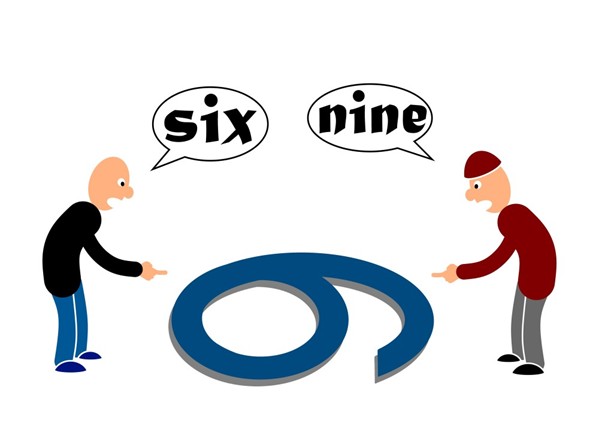
Effective communication is vital in every area of life, but especially in leadership. It’s not just about delivering your message; it’s about truly understanding others and creating a space where everyone feels heard, respected, and valued. Two key components of strong communication are perspective-taking and active listening. These skills can transform how you interact with others, both in personal and professional settings, and help you build deeper, more meaningful relationships.
What is Perspective-Taking?
Perspective-taking is the ability to step into someone else’s shoes—to see the world from their viewpoint. It’s more than just listening to their words; it’s about understanding the emotions, intentions, and circumstances that influence their thoughts and actions.
Think about the last time you felt misunderstood. Maybe someone snapped at you for no apparent reason, or you felt criticized when you were just trying to share your thoughts. Often, in these moments, we automatically assume the other person is being unreasonable or inconsiderate. This is where perspective-taking can help. By taking a moment to pause and ask yourself, What might be influencing their behavior? you open the door to understanding instead of frustration.
For example, in a work setting, if a colleague seems frustrated or distant, instead of reacting with irritation, you could consider whether they’re stressed, overwhelmed, or dealing with something personal. This simple shift in perspective helps us to connect more deeply with others, rather than simply reacting to the surface-level behavior.
The Importance of Active Listening
Active listening is about being fully present in a conversation—listening not just with your ears, but with your whole being. It means paying attention to the words, tone, body language, and even the emotions behind what’s being said.
Have you ever had a conversation where you felt like the other person wasn’t really listening? Maybe they were nodding, but their mind was elsewhere, or they cut you off before you could finish your thoughts. It’s frustrating, isn’t it? Active listening is the opposite of this—it’s about making sure the other person feels truly heard.
When you’re actively listening, you’re not just waiting for your turn to speak. You’re absorbing the message, interpreting the emotions behind it, and responding thoughtfully. For example, when your partner is venting about their day, instead of jumping in with advice or solutions, simply listening and saying, “I hear how tough that was for you,” can make all the difference. It shows empathy and helps build trust.
Perspective-Taking and Active Listening in Leadership
Both perspective-taking and active listening are especially important in leadership. As a leader, when you can step back and view situations from your team members’ perspectives, you build an environment of trust and mutual respect. And when you actively listen to them, you create a space where they feel valued and understood.
Let’s take an example from the workplace: You’ve asked your team to work on a tight deadline, and one of your team members is clearly frustrated. Instead of dismissing their feelings as unimportant, you take a moment to understand where they’re coming from. You ask, “What’s going on? How are you feeling about this deadline?” By practicing perspective-taking and active listening, you not only get to the root of the problem but also show your team member that their feelings are valid. This helps foster a sense of belonging and collaboration, making it easier to find solutions together.
Everyday Life and the Power of Perspective-Taking and Active Listening
In our daily lives, these two skills can drastically improve how we interact with others. We’ve all had moments when we’ve felt like we were speaking to someone who wasn’t really listening, or when a conversation turned into an argument because we assumed the other person was being unreasonable.
For example, think about a disagreement with a friend or family member. You might find yourself thinking, Why don’t they get it? But if you pause, take a step back, and try to see the situation from their side, you might discover new information that shifts your understanding. Maybe they’re dealing with their own stress, or perhaps they have a perspective you didn’t consider. This doesn’t mean you have to agree with them, but it helps you communicate more effectively, without letting assumptions cloud your judgment.
Practical Tips for Improving Perspective-Taking and Active Listening
- Empathy First: When someone is speaking to you, try to feel what they might be feeling. This isn’t about agreeing with them—it’s about showing understanding.
- Give Your Full Attention: Whether at work or home, put away distractions like your phone when engaging in a conversation. Focus on the person in front of you.
- Ask Open-Ended Questions: Encourage others to share more about their thoughts and feelings by asking questions like, “Can you tell me more about what you’re thinking?”
- Reflect and Clarify: After listening, repeat what you’ve heard to confirm your understanding. “So, it sounds like you’re saying… Is that right?”
- Pause Before Reacting: When emotions run high, take a moment to breathe and collect your thoughts before responding. This helps avoid knee-jerk reactions.
Conclusion
In both leadership and life, perspective-taking and active listening are powerful tools that can create deeper connections, improve communication, and foster empathy. Whether in the workplace or at home, these skills help you navigate difficult conversations with calmness and clarity. By practicing these simple yet transformative techniques, you can build stronger relationships, improve problem-solving, and ultimately lead with greater understanding and impact.

I’m Ting,
I’m here to help you reclaim your ENERGY so you can lead with PURPOSE, POWER and AUTHENTICITY.
Here you’ll find the tools to build the future you love… and I’ll help you get there.
Tell me Something...
Start your journey to deeper self - connection and vibrant energy.
book a session with Ting now!
1-1 Coaching
A safe space just for you — to pause, reflect, and grow.
Team Coaching
Great teams don’t just work together — they grow together.
Private Yoga Course
Reclaim your energy and presence — on the mat and beyond.

